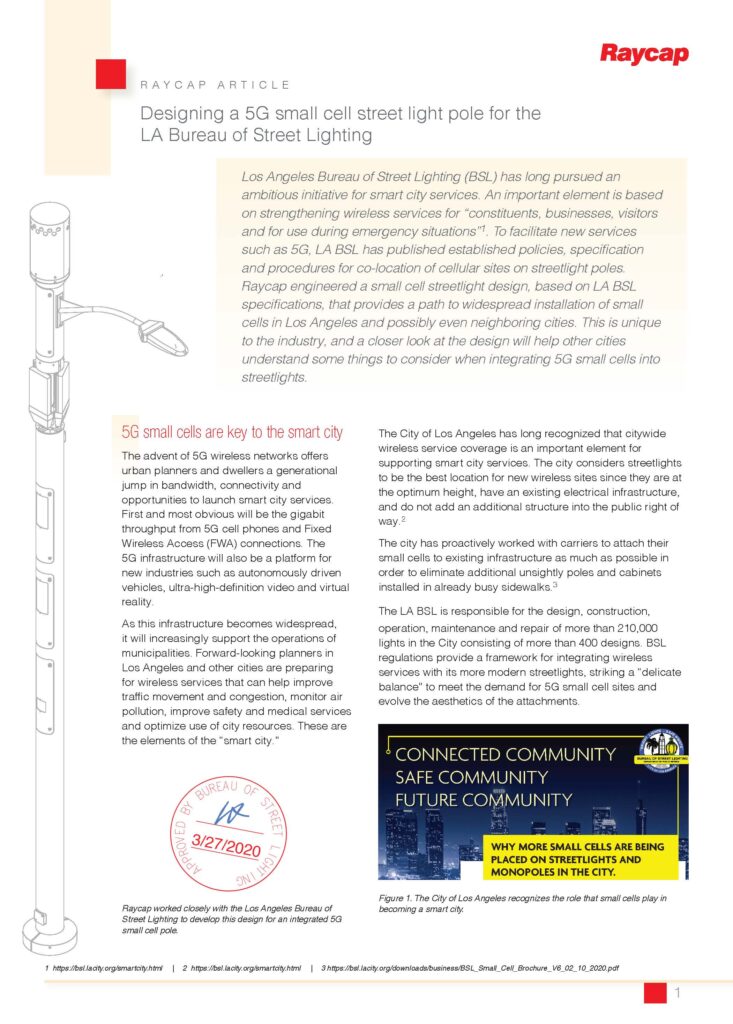The LA Bureau of Street Lighting (BSL) is at the forefront of a visionary initiative aimed at transforming the city into a hub of smart city services. One of the central pillars of this endeavor is the enhancement of wireless services to benefit a wide spectrum of users, including residents, businesses, tourists, and most crucially, during emergency situations.
The pressing need for stronger wireless infrastructure has become increasingly evident as cities like Los Angeles strive to keep pace with the digital age. To address this, the Los Angeles Bureau of Street Lighting has taken proactive steps by formulating and implementing comprehensive policies, specifications, and procedures for the co-location of cellular sites on streetlight poles. This strategic move not only optimizes existing infrastructure but also provides a cost-effective and efficient solution to bolster wireless connectivity.
Raycap, a leader in engineering and technology solutions, has played a pivotal role in this initiative by designing a groundbreaking small-cell streetlight system. This innovative design is intricately crafted to align seamlessly with the specifications set forth by the LA Bureau of Street Lighting. What sets it apart is its potential to revolutionize small-cell deployment in Los Angeles and potentially extend its reach to neighboring cities.
In an era where 5G technology is rapidly reshaping the way we live, work, and communicate, the collaboration between the LA Bureau of Street Lighting and Raycap promises a brighter, more connected future. It’s not just about faster internet; it’s about the creation of a smarter, more resilient city that can harness the power of technology to improve the lives of its residents and ensure public safety during emergencies. The partnership between LA Bureau of Street Lighting and Raycap serves as a beacon of progress, showing the way forward for other cities looking to embrace the digital age and become truly smart cities.

